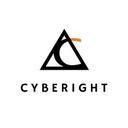
Taraxa
Democratizing IoT data with infinitely-scalable concurrent contracts, trustless light nodes, and encrypted data markets on top of block lattice. Distributed ledger technologies (DLT) can address many of IoT's challenges, making them perfectly complementary. The bad news is, current DLT's foundation is weakened by numerous flaws, making it poorly-suited for large-scale IoT applications, which is why we built Taraxa. Inspired by the principles of software transactional memory (STM), Taraxa achieves node-level concurrency by speculative parallelization of smart contract calls, with conflict minimization achieved from built-in concurrent data structures. The network is sharded into jurisdictions determined by an optimization algorithm that evenly spreads workload between the shards and minimizes cross-shard transactions. These shards evolve automatically as each node executes the algorithm on their own, facilitated with a simple consensus on the historical set as input. IoT devices are constrained by their processing, memory, and bandwidth limitations. Instead of making them blind puppets of full nodes, Taraxa has created the first practical trustless light node to make devices fully independent and autonomous in their trading decisions. The first Dapp on Taraxa will be an encrypted data market with a variety of data trading and encryption tools, giving our ecosystem partners the tools necessary to set up their own domain-specific IoT data use cases.






